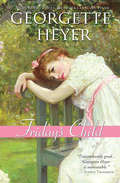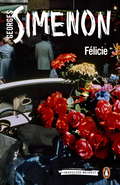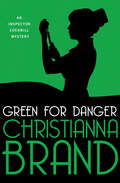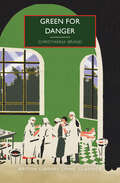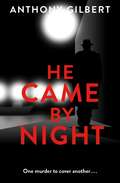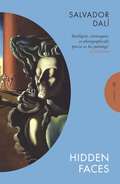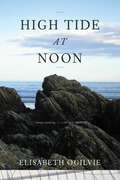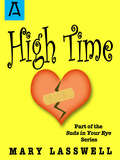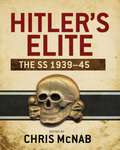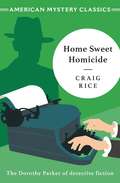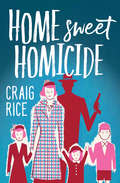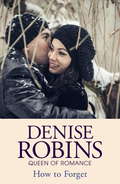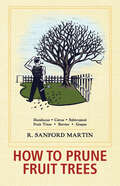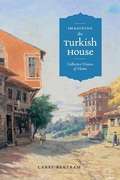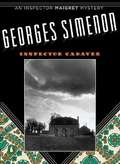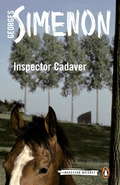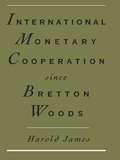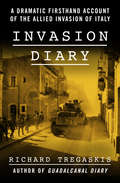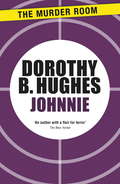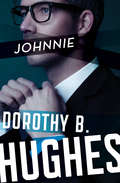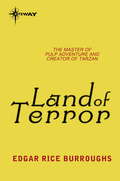- Table View
- List View
Friday's Child
by Georgette Heyer"A lightsome, brightsome comedy." --Kirkus Reviews "Nimble, light-hearted chronicle of high London society in the time of the Regency." --The New Yorker Georgette Heyer's sparkling romances have charmed and delighted millions of readers. Her characters brilliantly illuminate one of the most exciting and fascinating eras of English history--when drawing rooms sparkled with well-dressed nobility and romantic intrigues ruled the day. Heyer's heroines are smart and independent; her heroes are dashing noblemen who know how to handle a horse, fight a duel, or address a lady. And her sense of humor is legendary.When the incomparable Miss Milbourne spurns the impetuous Lord Sherington's marriage proposal (she laughs at him--laughs!) he vows to marry the next female he encounters, who happens to be the young, penniless Miss Hero Wantage, who has adored him all her life. Whisking her off to London, Sherry discovers there is no end to the scrapes his young, green bride can get into, and she discovers the excitement and glamorous social scene of the ton. Not until a deep misunderstanding erupts and Sherry almost loses his bride, does he plumb the depths of his own heart, and surprises himself with the love he finds there. "Reading Georgette Heyer is the next best thing to reading Jane Austen." --Publishers Weekly Georgette Heyer (1902-1974) wrote over fifty novels, including Regency romances, mysteries, and historical fiction. She was known as the Queen of Regency romance, and was legendary for her research, historical accuracy, and her extraordinary plots and characterizations.
From Concentration Camp to Campus: Japanese American Students and World War II
by Allan W. AustinIn the aftermath of Japan's attack on Pearl Harbor and the systematic exile and incarceration of thousands of Japanese Americans, the National Japanese American Student Relocation Council was born. Created to facilitate the movement of Japanese American college students from concentration camps to colleges away from the West Coast, this privately organized and funded agency helped more than four thousand incarcerated students pursue higher education at more than six hundred schools during WWII. Allan W. Austin's From Concentration Camp to Campus examines the Council's work and the challenges it faced in an atmosphere of pervasive wartime racism. Austin also reveals the voices of students as they worked to construct their own meaning for wartime experiences under pressure of forced and total assimilation. Austin argues that the resettled students succeeded in reintegrating themselves into the wider American society without sacrificing their connections to community and their Japanese cultural heritage.
Félicie
by Georges Simenon David CowardA story of love and obsession featuring a most memorable femme fatale, the twenty-fifth novel in the new Penguin Maigret series. Peg Leg Lapie, a crusty old sailor, is found mysteriously murdered in a most incongruous setting: a picturesque cottage near Paris, where he lived attended only by his young housekeeper, Felicie. But Lapie was not alone Maigret, chief inspector of the Paris police, is sure of it. A man at work in his garden, wearing clogs and a straw hat, does not suddenly drop his tools to go indoors and fetch a bottle of brandy to drink alone in the summerhouse. There must have been another glass that someone removed. But Félicie, in her red hat trimmed with an iridescent feather, proves a champion adversary, as skilled in innuendo and evasion as Maigret is in deduction.From the Trade Paperback edition.
Give Me Back My Heart
by Denise RobinsWhen wealthy, self-willed Fiona meets handsome Bill Lindsey one fateful Scottish spring day, she little suspects that the encounter will change her life. Before long, the forceful young man’s quiet dynamism begins to exercise a powerful attraction for her. But Fiona is already engaged to the colourless Philippe; her stern father’s commands and the onset of World War seem to end any thoughts of being with Bill.Then, in exotic wartime Casablanca, Bill enters her life once more, wounded in action at sea, and Fiona is faced with a choice every woman fear: between her passions – and her duty…
Green for Danger (The Inspector Cockrill Mysteries #2)
by Christianna BrandA man dies on the operating table, and Inspector Cockrill suspects murderAs German V-1 rockets rain down on the English countryside, the men and women of the military hospitals fight to stay calm. The morning after a raid, Doctor Barnes prepares for a routine surgery to repair a postman's broken leg. But with general anesthesia, there is always danger. Before the first incision is made, the postman turns purple. Barnes and his nurses do what they can, but the patient is dead in minutes. The coroner calls for an inquest. Barnes has a history of lost patients, and cannot afford more trouble. Scotland Yard Detective Inspector Cockrill is unimpressed by the staff at the hospital, which he finds a nest of jealousy, indiscretion, and bitterness. One of them, doctor or nurse, murdered the postman--and it won't be long before they kill again.
Green for Danger: The Official Anthology Of The Crime Writer's Association (British Library Crime Classics)
by Christianna Brand"Hands down one of the best formal detective stories ever written."— Kirkus Reviews, STARRED reviewThis Golden Age masterclass of red herrings and tricky twists, first published in 1944, features a tense and claustrophobic investigation with a close-knit cast of suspects."You have to reach for the greatest of the Great Names (Agatha Christie, John Dickson Carr, Ellery Queen) to find Christianna Brand's rivals in the subtleties of the trade."—Anthony Boucher in The New York TimesIt is 1942, and struggling up the hill to the new Kent military hospital Heron's Park, postman Joseph Higgins is soon to deliver seven letters of acceptance for roles at the infirmary. He has no idea that the sender of one of the letters will be the cause of his demise in just one year's time.When Higgins returns to Heron's Park with injuries from a bombing raid in 1943, his inexplicable death by asphyxiation in the operating theatre casts four nurses and three doctors under suspicion, and a second death in quick succession invites the presence of the irascible—yet uncommonly shrewd—Inspector Cockrill to the hospital. As an air raid detains the inspector for the night, the stage is set for a tense and claustrophobic investigation with a close-knit cast of suspects.
Guide to the IMF Special Feature: Rebuilding Economies After Conflict
by International Monetary FundA report from the International Monetary Fund.
He Came by Night (Mr Crook Murder Mystery)
by Anthony GilbertHow do you catch a killer when the murder goes unnoticed?Classic crime from one of the greats of the Detection ClubThe victim was certainly deserving of death, but not the hard, cruel death he found. No one deserved that . . .At first, the killer goes unsuspected. Someone else would pay the price for the crime - an innocent woman would pay and the murderer was willing to arrange other, more 'accidental' deaths to ensure it . . . until solicitor-detective Arthur Crook steps in. In one of his most baffling cases, Crook only has two guiding principles: his client is always innocent and, come hell or high water, he always gets his man.
Hidden Faces (Pushkin Press Classics)
by Salvador DaliThe only novel by the twentieth century's most acclaimed surrealist painter, a richly visual depiction of a group of eccentric aristocrats in the years preceding World War II&“The book is so full of visual invention, so witty, so charged with an almost Dickensian energy that it's difficult not to accept its author's own arrogant evaluation of himself as a genius.&” — ObserverIn swirling, surreal prose, the iconic artist Salvador Dalí portrays the intrigues and love affairs of a group of eccentric aristocrats who, in their luxury and extravagance, symbolize decadent Europe in the 1930s. In the shadow of encroaching war, their tangled lives provide a thrilling vehicle for Dalí's uniquely spirited imagination and artistic vision.Hidden Faces beckons readers to enter the bizarre world already familiar to us from Dali's paintings. The story unfolds in vividly visual terms, beginning in the Paris riots of February 1934. The journey leading to the closing days of the Second World War constitutes a brilliant and dramatic vehicle for Dali's unique vision.&“Start the first page and you are in the presence of an old-fashioned baroque novel, intelligent, extravagant, as photographically precise as his paintings but not so silly ... Dali notices everything ...&” — Guardian
High Tide at Noon
by Elisabeth OgilvieYoung, vivacious Joanna Bennett desperately wishes to be captain of her own lobstering boat, but despite being the favored daughter of Bennett&’s Island&’s founding family, she is still just a girl in the eyes of the community, and a girl living off the coast of Maine in the early 20th century is expected to mind the kitchen, not tend to pot buoys. While quietly struggling to find her place on insular Bennett&’s Island, one where she could let her bold and opinionated nature shine without shaming her family, Joanna instead finds love when she meets a witty stranger with a sparkling smile just off the mailboat. One whirlwind courtship and wedding later, Joanna finds herself master of her own house, and every aspect of her beloved island seems to reflect her joy. But when the luster begins to wear off and her husband&’s dark secrets slowly reveal themselves, Joanna must draw on her determination, resilience, and resourcefulness to keep her family together.This evocative coming-of-age story transports readers to the beautiful and rugged Maine coast, where families must eke their livelihoods from the tempestuous ocean but in return they&’re afforded the daily splendor and simple pleasures of island life.
High Time (Suds In Your Eye Ser. #2)
by Mary LasswellWith young Americans leaving to fight in WWII, Mrs. Feeley, Mrs. Rasmussen, and Miss Tinkham are overcome with patriotism and decide they owe a contribution to the war effort themselves. But when the manager of nearby Consocraft Airplane Factory doesn't think that they're cut out for riveting, they try a more domestic approach to help their boys overseas. The second installment of Mary Lasswell's delightful and lighthearted stories to feature the residents of San Diego's Noah's Ark junkyard is full of brash do-goodery and fun. Get ready to be swept up in Mrs. Feeley and friends' impeccable charm in this classic title about The Greatest Generation.
Hitler's Elite
by Chris McnabThe Third Reich's Waffen-SS defended Nazi Germany's Eastern & Western Fronts, and the Allgemeine-SS ran Holocaust concentration camps such as Auschwitz, Dachau, and Buchenwald.The SS has become the most infamous military formation in history. From its diminutive origins in the 1920s as Hitler's personal bodyguard, by the late war years it grew to a sprawling organization of hundreds of thousands of men, with a field army (the Waffen-SS-Armed-SS) numbering nearly 40 divisions and huge corporate, racial, and political power in the Allgemeine-SS (General-SS). The activities of the SS ranged from the heroic to the horrific; from fighting extraordinary defensive battles on the Eastern and Western Fronts, to running the concentration and extermination camp systems, and providing personnel for the Einsatzgruppen murder squads in Eastern Europe. Hitler's Elite: The SS 1939-45 tells the complete story of the SS at individual, unit, and organizational levels. Following an explanation of the SS' complex political and social origins, and its growth within the Nazi empire, it goes on to look at both its war record and its wider role in Heinrich Himmler's implementation of Hitler's vision for the Third Reich. As well as providing a combat history of the Waffen-SS from 1939 to 1945, it also explores themes such as ideology, recruitment, foreign SS personnel, training, and equipment. The textual history is brought to life with more than 200 contemporary photographs and colour artworks from Osprey's series titles. As a companion volume to Hitler's Armies and Hitler's Eagles, this book gives a detailed and highly visual insight into one of Hitler's most powerful instruments of policy.
Hitler's Fortresses
by Chris McnabFrom the Siegfried Line to the Atlantic Wall to central Italy, this detailed guide to every level of defensive project in the Third Reich won't disappoint. It takes you inside Channel Islands' pillboxes, Normandy coastal gun positions, and emplaced tank turrets on the Gothic Line in Italy. The secretive world of Hitler's command bunkers is revealed in detail, and the principles and engineering of basic frontline defences are explained, showing how the average German soldier prepared to stand his ground. There is also a dedicated chapter on special-purpose fortifications, including U-boat pens, V-weapon sites, and flak towers.This complete journey into German wartime fortifications reveals much about the strategic and tactical thinking of Hitler and his Wehrmacht, and combat accounts explore how effective the defences were in practice. The book is illustrated throughout with more than 200 drawings, maps, and photographs; the drawings include 3D views and detailed cutaway diagrams, showing exactly how key types of defensive positions looked and functioned. As a guide for both the general historian and for the modern battlefield tourist, Hitler's Fortresses is an authoritative record of the Third Reich's defensive mindset.Hitler's use of manoeuvre warfare should not distract us from his more defensive projects. From the moment Hitler took power in 1933, massive investment went into building fortified defences in Germany's vulnerable regions, particularly along the Franco-German border. The "West Wall", for example, eventually stretched for more than 390 miles and contained some 14,000 pillboxes, being one of the great engineering projects of the 1930s. War expanded Germany's defensive requirements, not least along the Atlantic coastline, where from 1942 to 1944 engineers built a chain of batteries, bunkers, and minefields from Norway to the Franco-Spanish border, which together constituted the "Atlantic Wall". Similarly, chains of defensive works were sunk into the mountainous terrain of Italy between 1943 and 1945, in an attempt to stop the grinding Allied advance.
Home Sweet Homicide
by Craig RiceA crime writer's family witnesses a real-life murder - the neighbourhood just got dangerous...Perfect for fans of KNIVES OUT'There was never anyone else like Craig Rice' NEW YORK TIMESGrowing up with a crime writer for a mother leaves the Carstairs family with a talent for detection. So when they witnesses a neighbourhood murder, they launch their own investigation. And why not? They know everything about baffling mysteries from reading their mother's books, the publicity could do wonders for her sales, and then she and a handsome detective could fall in love. It's too perfect for words.Marion's too busy wrapping up the loose ends of her latest book for the inconvenience of a real crime. But what's surfacing in the shadows of the house next door is not quite as predictable as fiction: accusations of racketeering, kidnapping and blackmail - and much more...
Home Sweet Homicide
by Craig RiceFrom the &“grand dame of mystery mixed with screwball comedy&”: The children of a widowed mystery writer play amateur sleuths and matchmakers (Ed Gorman, Ellery Queen Award–winning author). When your mom&’s a mystery writer, a talent for detection is only natural. So when the three children of prolific whodunit author Marion Carstairs become material witnesses in a neighborhood murder, they launch their own investigation. And why not? They know everything about baffling mysteries from reading their mother&’s books, the publicity could do wonders for her sales, and then she and a handsome detective could fall in love. It&’s too perfect for words. Marion&’s too busy wrapping up the loose ends of her latest book for the inconvenience of a real crime. But what&’s surfacing in the shadows of the house next door is not quite as predictable as fiction: accusations of racketeering, kidnapping and blackmail; a slain stripper; a grieving but slippery husband; a wily French artist; a panicky movie star; and a cop who&’s working Marion&’s last nerve. If the kids are game, Marion decides she is too—in between chapters, at least. Besides, this whole dangerous bloody mess could turn out to be a source of inspiration! This stand-alone mystery was the basis for the classic 1946 comedy starring Randolph Scott and Peggy Ann Garner and &“makes clear why Craig Rice remains one of the best writers of mystery fiction&” (Jeffery Marks, author of Who Was That Lady?).
How to Forget
by Denise RobinsWhen Helen Verne went to Switzerland for a holiday, she little dreamedof the intricacies of love in which she soon found herself plunged.And yet when she first saw Simon, he was kissing another woman, PetalPhilipson - and he was married...A captivating love story from the 100-million-copy bestselling Queenof Romance, first published in 1944, and available now for the first timein eBook.
How to Prune Fruit Trees: Twentieth Edition
by Georgia SalesMake the right cut every time and maximize your fruit production—covers over forty varieties of trees from apples to almonds and plums to pomegranates. Note: If you would like to see the Echo Point paperback version of How to Prune Fruit Trees, please search ISBN 1626549540. While the act of pruning is simple enough, knowing where and when to prune can confound even experienced gardeners. For more than half a century, Robert Sanford Martin&’s How to Prune Fruit Trees has been the go-to guide for pruners of all levels of expertise. As one reviewer noted, &“This book simplifies what other books complicate. It has a small amount of text paired with line drawings that help break pruning tasks down into something you can easily understand.&” Martin has judiciously pruned his words to make his advice as clear and simple as possible. His guidance in the art of cutting back and thinning out has been responsible for the preservation of countless healthy trees and orchards. In this enhanced edition, additional information from H. H. Thomas&’s Pruning Made Easy explores the treatment of roots, side shoots, sub-laterals, standards, cordon trees, and other aspects of plant care. Well illustrated and clear, this book is an indispensable guide for year-round pruning success for both seasoned and amateur gardeners.
Imagining the Turkish House: Collective Visions of Home
by Carel Bertram"Houses can become poetic expressions of longing for a lost past, voices of a lived present, and dreams of an ideal future." <P><P>Carel Bertram discovered this truth when she went to Turkey in the 1990s and began asking people about their memories of "the Turkish house." The fondness and nostalgia with which people recalled the distinctive wooden houses that were once ubiquitous throughout the Ottoman Empire made her realize that "the Turkish house" carries rich symbolic meaning. In this delightfully readable book, Bertram considers representations of the Turkish house in literature, art, and architecture to understand why the idea of the house has become such a potent signifier of Turkish identity.
Inspector Cadaver
by Georges SimenonThree vintage Maigret novels by legendary mystery author Georges Simenon One of the world 's most successful crime writers, Georges Simenon has thrilled mystery lovers since 1931 with his matchless creation Inspector Maigret. In My Friend Maigret, Inspector Maigret investigates the murder of a small- time crook on a Mediterranean island. Told in Simenon's spare, unsentimental prose, Inspector Cadaver is a haunting exploration of provincial hypocrisy and snobbery, in which Maigret encounters a rival sleuth from his past. In Maigret and the Man on the Boulevard, Simenon's tenacious detective pieces together the life of a man who for three years lived a secret life-until he is found stabbed to death in an alleyway.
Inspector Cadaver
by Georges Simenon Will HobsonA battle of wills between Inspector Maigret and an adversary from the past. The twenty-fourth novel in the new Penguin Maigret series. When a friend's brother-in-law is accused of murdering his daughter's lover, Maigret arrives in a small French town to help and is plunged into an atmosphere of animosity. He soon finds himself tangled up in a case that may ruin the very people whom he has come to aid and must face an old enemy--an ex-police officer nicknamed "Inspector Cadaver"--who seems to be doing everything in his power to obstruct Maigret's investigations.From the Trade Paperback edition.
International Monetary Cooperation Since Bretton Woods
by Harold JamesThis comprehensive account of the management of the international monetary system from the 1944 Bretton Woods conference to the present day documents the structure and movements of the world economy during a period of dramatic change. Commissioned by the International Monetary Fund to mark its fiftieth anniversary, the work is nevertheless a fully independent one: written by an outside historian with full access to IMF archives and staff, and reviewed by an independent editorial committee. An objective study of issues and events that are often controversial, the book skillfully interweaves the history of the IMF with that of world economic developments after the Second World War. The International Monetary Fund was created at Bretton Woods, but almost immediately the rivalry between the Soviet Union and the West split the industrialized world into two economic camps. As a result the IMF's role underwent significant changes in the immediate post-war years. Harold James analyzes the system during a period of relative stability until 1971, when the United States abandoned fixed exchange rates. Since that time countries have experienced radical fluctuations in the values of their currencies and the IMF has contended with the consequences. James brings to this history a unique breadth of knowledge and mastery of both economic theory and archival sources. In a well-paced and smoothly flowing narrative, key themes emerge, including the IMF's increasing surveillance role in global capital markets and its responsivenes in ensuring international monetary stability. Recent political changes make it possible to bring to light the Fund's work promoting liberalization in planned economies. James also reveals how intellectual changes have led to increasing consensus in the world about what constitutes good economic policy. The gold standard and the dollar standard, he concludes, have been replaced by a new "information standard" under which acccurate economic information is crucial to continuing properity. A story of continuity as well as change, International Monetary Cooperation Since Bretton Woods offers enduring lessons about international economic coordination. It will be of strong interest to all those concerned with the future, as well as the past, of the world economy.
Invasion Diary: A Dramatic Firsthand Account of the Allied Invasion of Italy
by Richard TregaskisA dramatic and richly detailed chronicle of the Allied invasions of Sicily and Italy from one of America&’s greatest war correspondents. Following the defeat of Axis forces in North Africa, Allied military strategists turned their attention to southern Italy. Winston Churchill famously described the region as the &“soft underbelly of Europe,&” and claimed that an invasion would pull German troops from the Eastern Front and help bring a swift end to the war. On July 10, 1943, American and British forces invaded Sicily. Operation Husky brought the island under Allied control and hastened the downfall of Benito Mussolini, but more than one hundred thousand German and Italian troops managed to escape across the Strait of Medina. The &“soft underbelly&” of mainland Italy became, in the words of US Fifth Army commander Lt. Gen. Mark Clark, &“a tough old gut.&” Less than a year after landing with the US Marines on Guadalcanal Island, journalist Richard Tregaskis joined the Allied forces in Sicily and Italy. Invasion Diary documents some of the fiercest fighting of World War II, from bombing runs over Rome to the defense of the Salerno beachhead against heavy artillery fire to the fall of Naples. In compelling and evocative prose, Tregaskis depicts the terror and excitement of life on the front lines and recounts his own harrowing brush with death when a chunk of German shrapnel pierced his helmet and shattered his skull. An invaluable eyewitness account of two of the most crucial campaigns of the Second World War and a stirring tribute to the soldiers, pilots, surgeons, nurses, and ambulance drivers whose skill and courage carried the Allies to victory, Invasion Diary is a classic of war reportage and &“required reading for all who want to know how armies fight&” (Library Journal). This ebook features an illustrated biography of Richard Tregaskis including rare images from the American Heritage Center at the University of Wyoming.
Johnnie (Murder Room #309)
by Dorothy B. HughesPrivate First Class Johnnie Brown is on a break in New York, with just two days to spend however he likes before shipping out to fight the Nazis. All he wants to do is ride the subway, and while his fellow soldiers are exploring the Statue of Liberty, the Empire State Building and what the nightclubs in Times Square have to offer, he pays his nickel and boards the train.Oddly, he runs into a stout, mysterious man speaking German. Johnnie follows him to an upscale townhouse, where he finds himself looking at more thrills than any cabaret. Suddenly he has lost his clothes, his sense of where he is and his dignity, but Johnnie isn't going to give up until he's uncovered every secret the townhouse is hiding.
Johnnie (Murder Room Ser.)
by Dorothy B. HughesLost in New York, a GI stumbles upon a nest of peculiar GermansPrivate First Class Johnnie Brown has only two days to spend in New York before he ships out to fight the Nazis. While his fellow soldiers amuse themselves at the Statue of Liberty, the Empire State Building, and the night clubs of Times Square, Johnnie has a humbler wish: to ride the subway. But no sooner has he paid his nickel than he detects something peculiar: a stout, mysterious man speaking German. Sensing espionage, Johnnie follows the German to a posh townhouse, where he finds more excitement than any cabaret can offer. Within minutes, he has lost his clothes, his dignity, and his sense of direction. But Johnnie is a devoted servant of Uncle Sam, and will not rest until every one of the townhouse&’s secrets have been stripped as naked as he is.
Land of Terror: Pellucidar Book 6 (PELLUCIDAR)
by Edgar Rice BurroughsIf you have ever wondered what a civilized man of the twentieth century would do if catapulted into an Old Stone Age where huge cave bears, saber-toothed tigers, monstrous carnivorous dinosaurs, mammoths, and mastodons roamed the savage terrain, you need look no further thanLand of Terror, the sixth installment of Edgar Rice Burroughs's Pellucidar series. Years ago David Innes and Abner Perry bored straight down through five hundred miles of the earth's crust and landed in Pellucidar, the savage, primeval world that lies at the center of the earth. This is the story of their continuing adventures in the timeless land of perpetual noon and their encounters with the hideous creatures and savage men who pursue them. Although they encounter enemies at every turn, David and Abner find a few loyal friends as they embark on exhilarating adventures.
